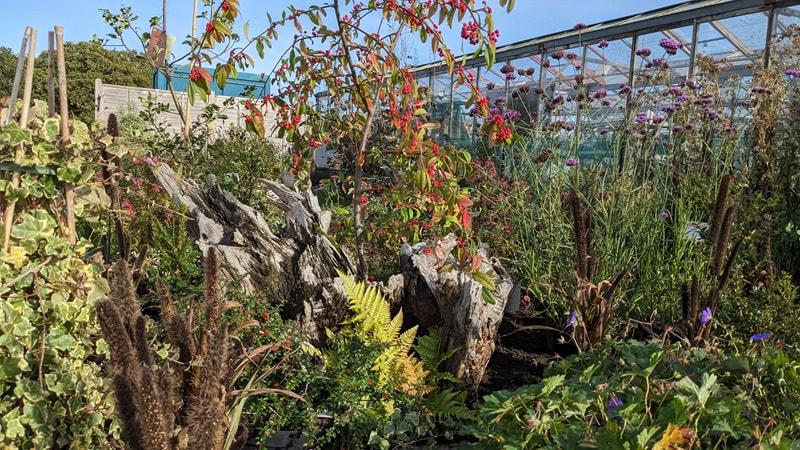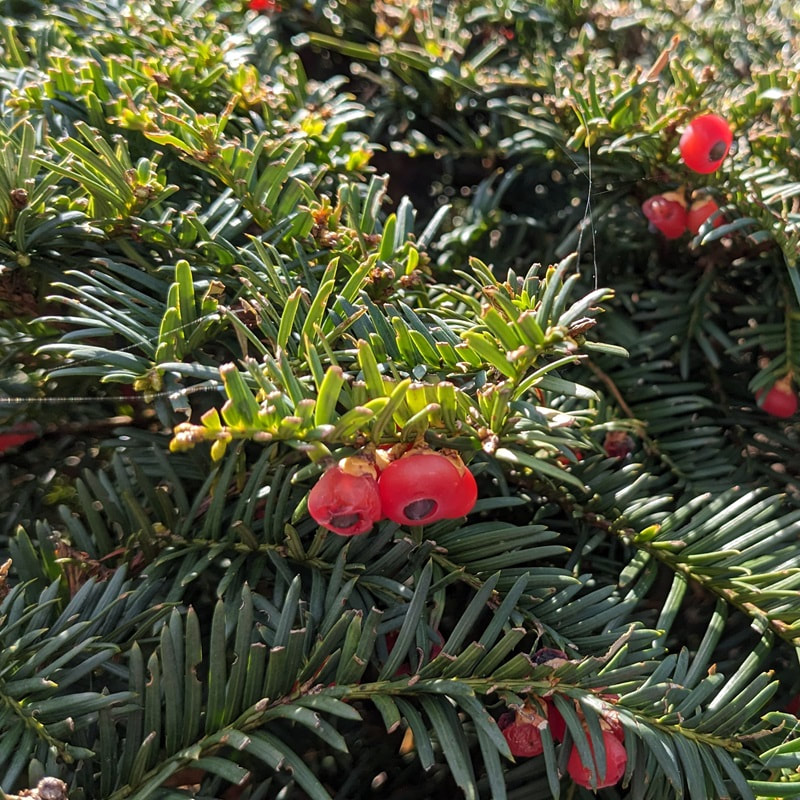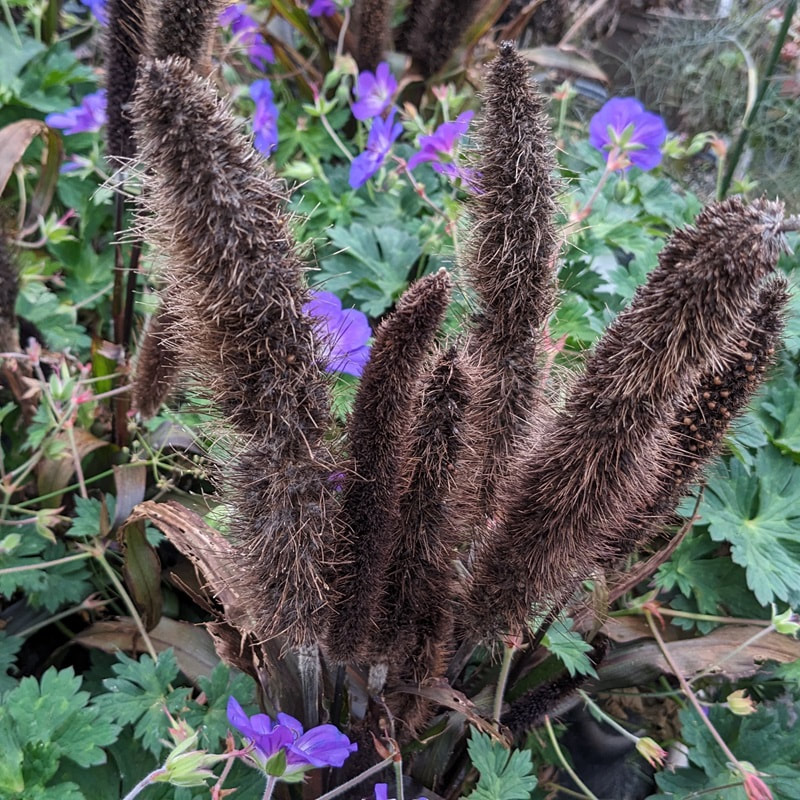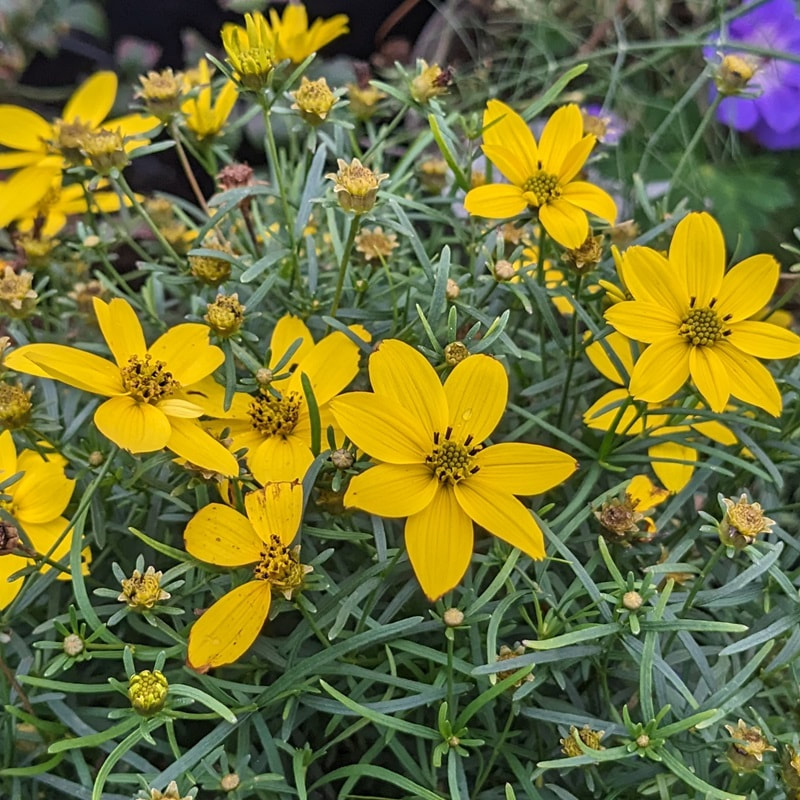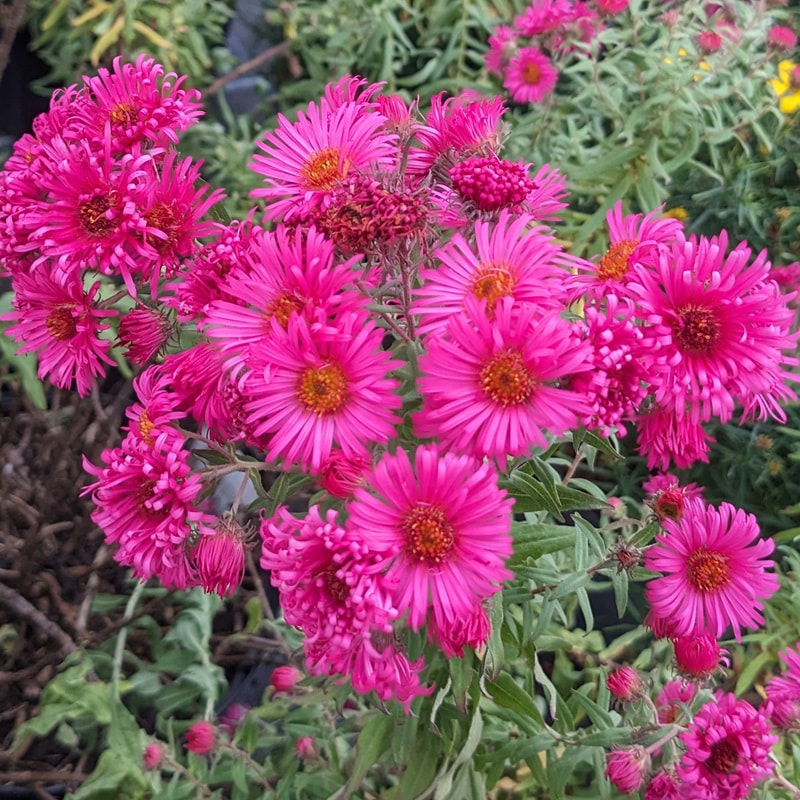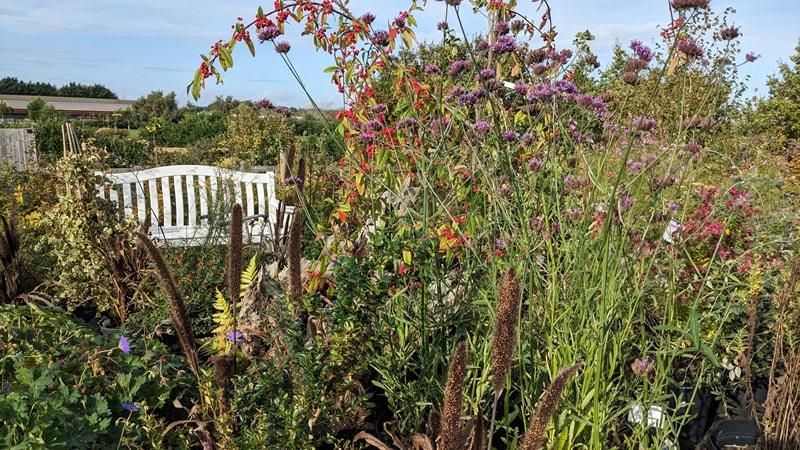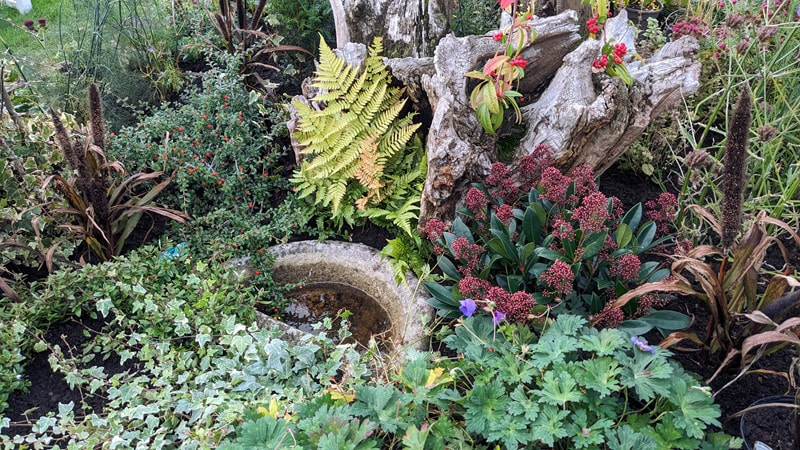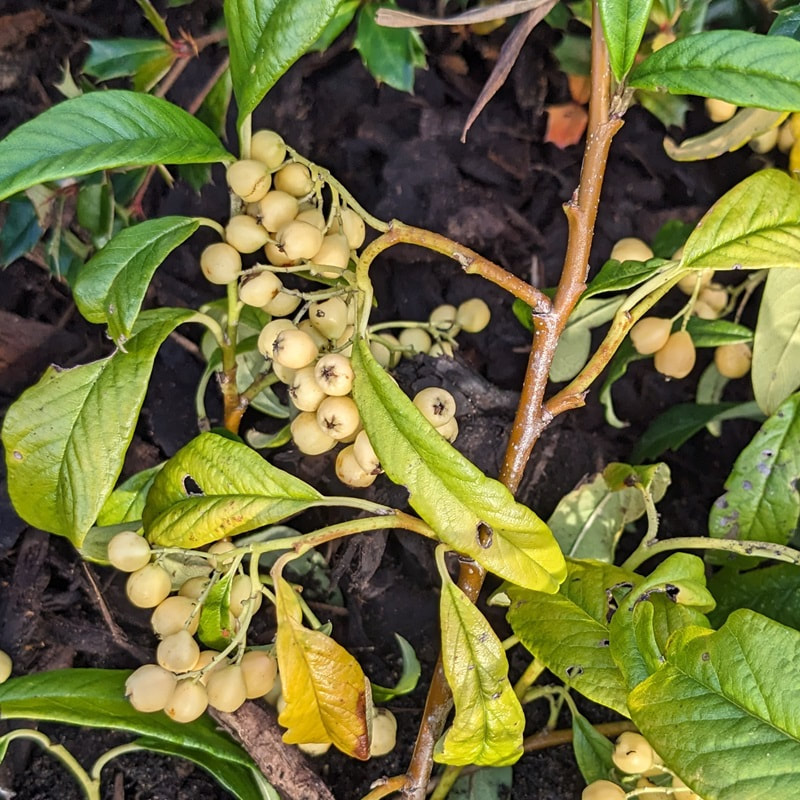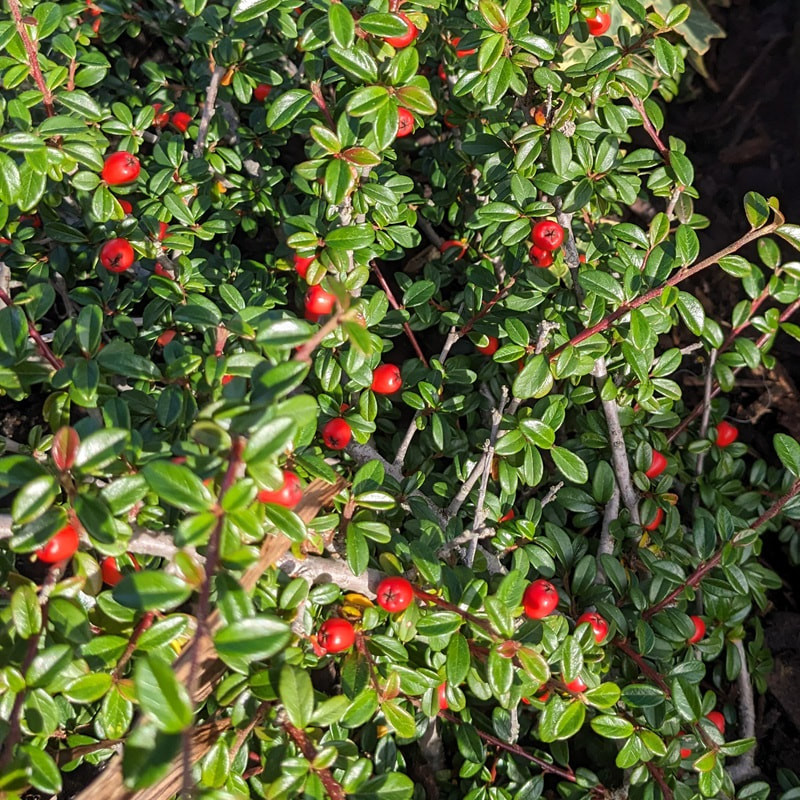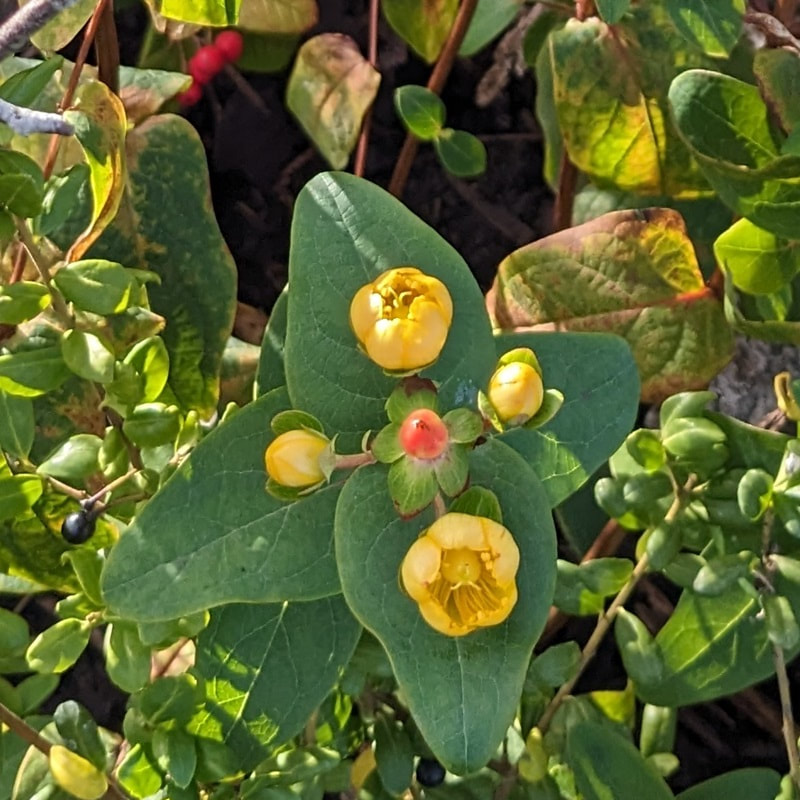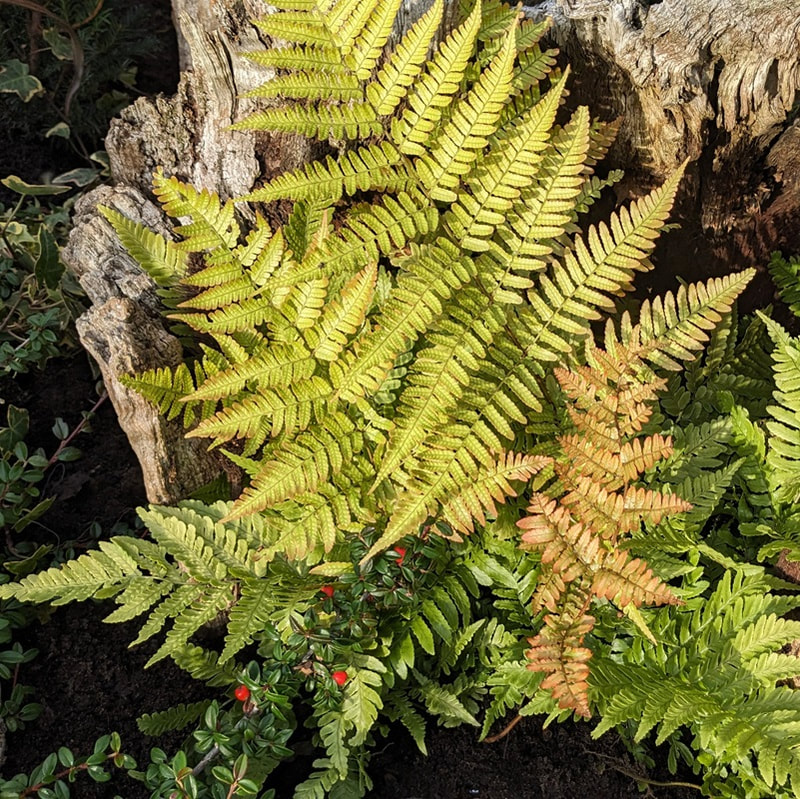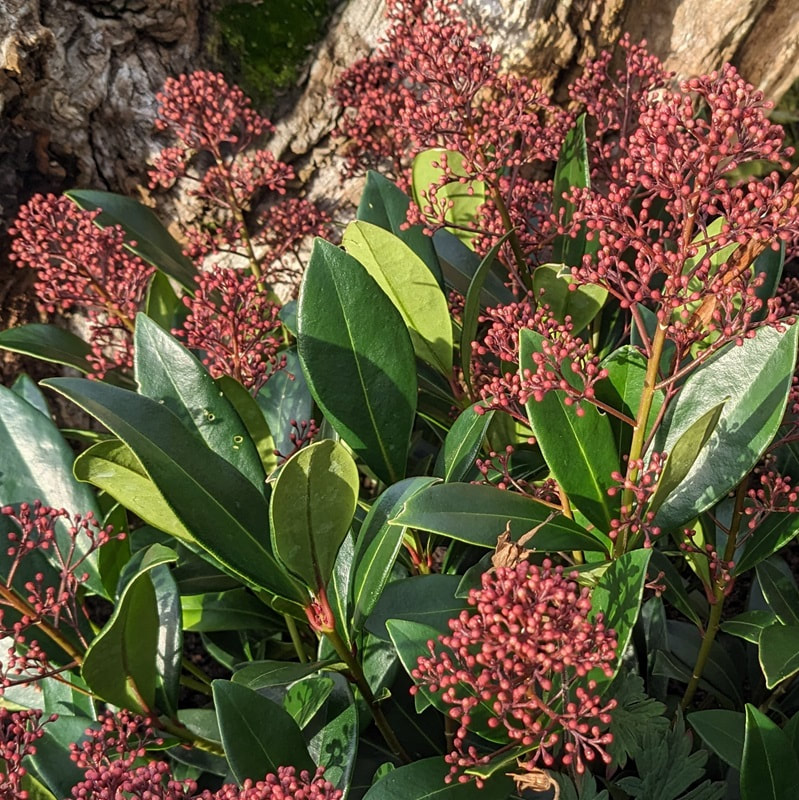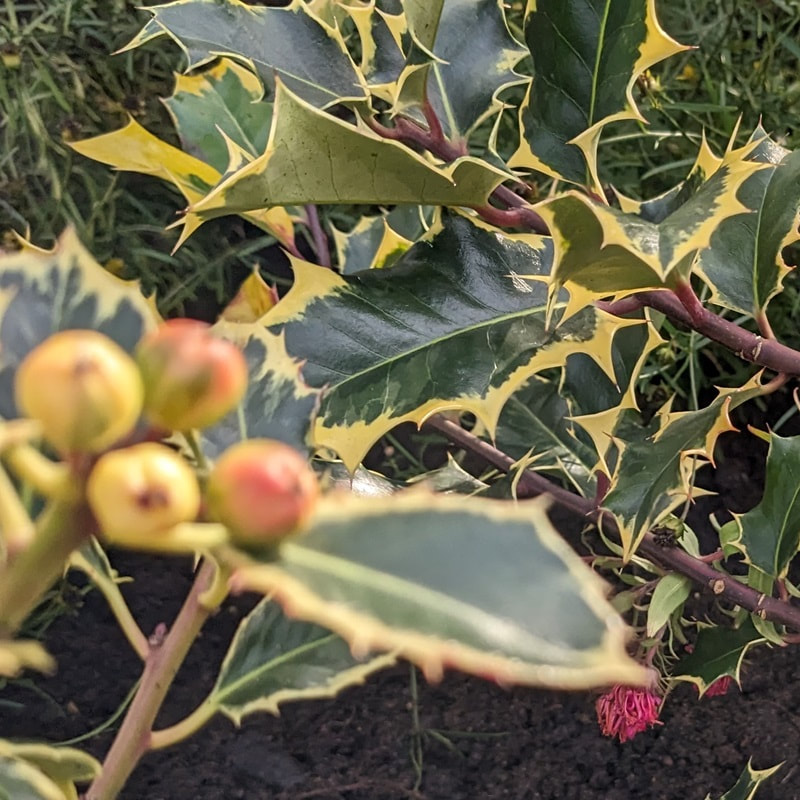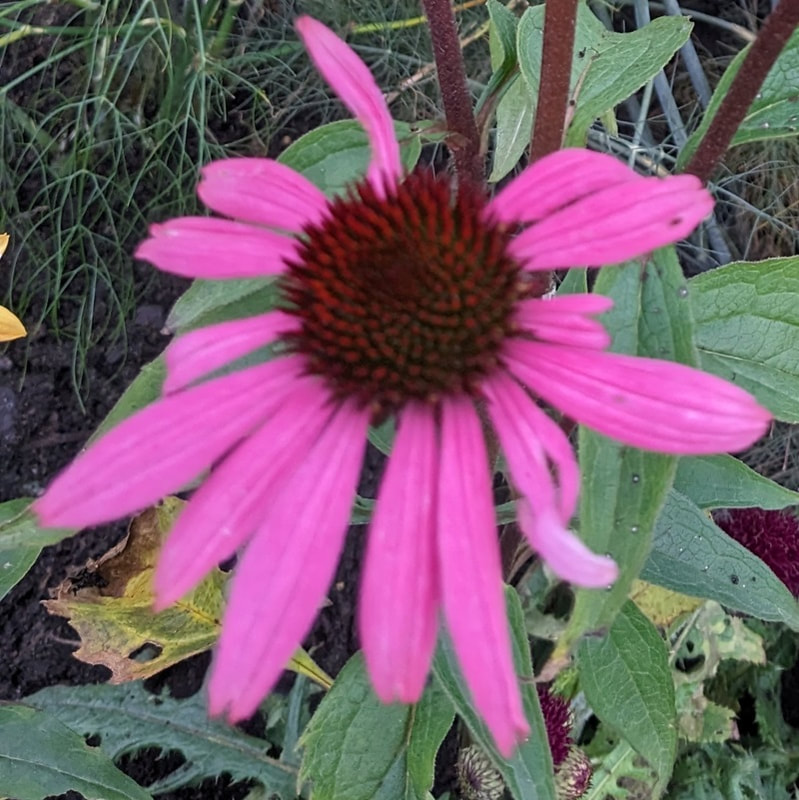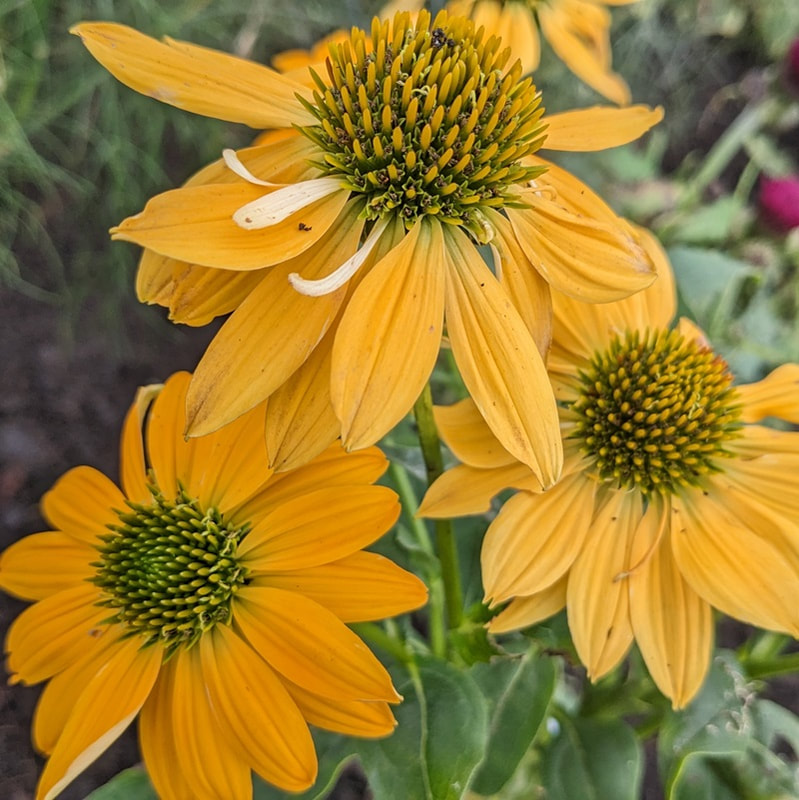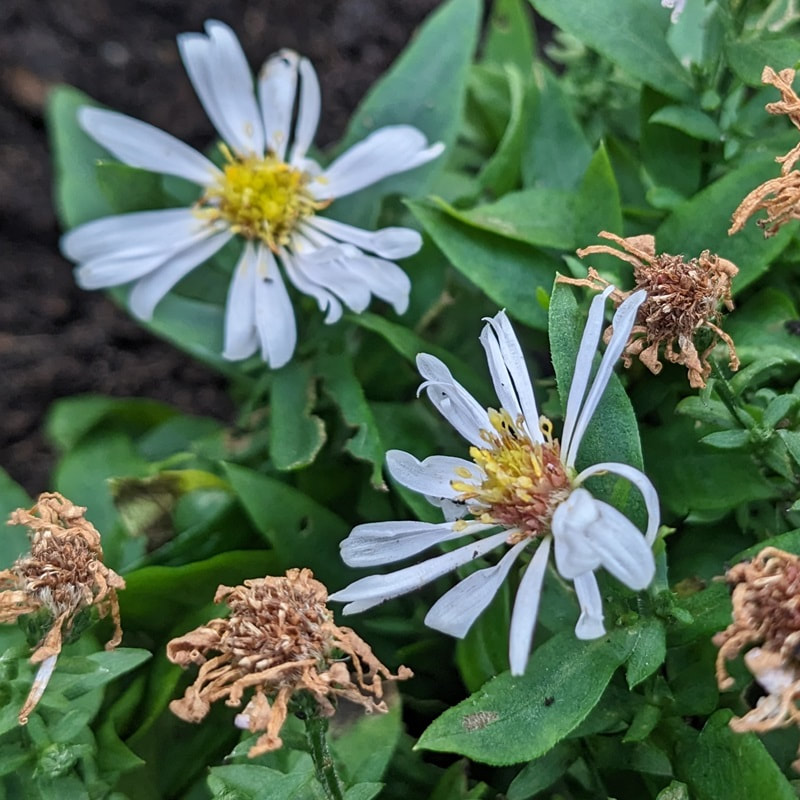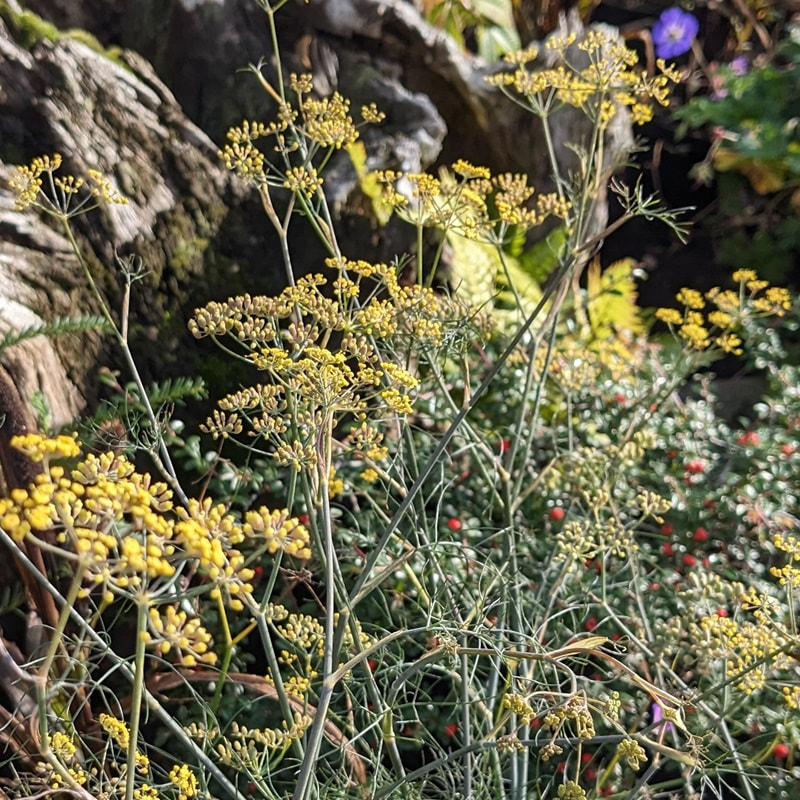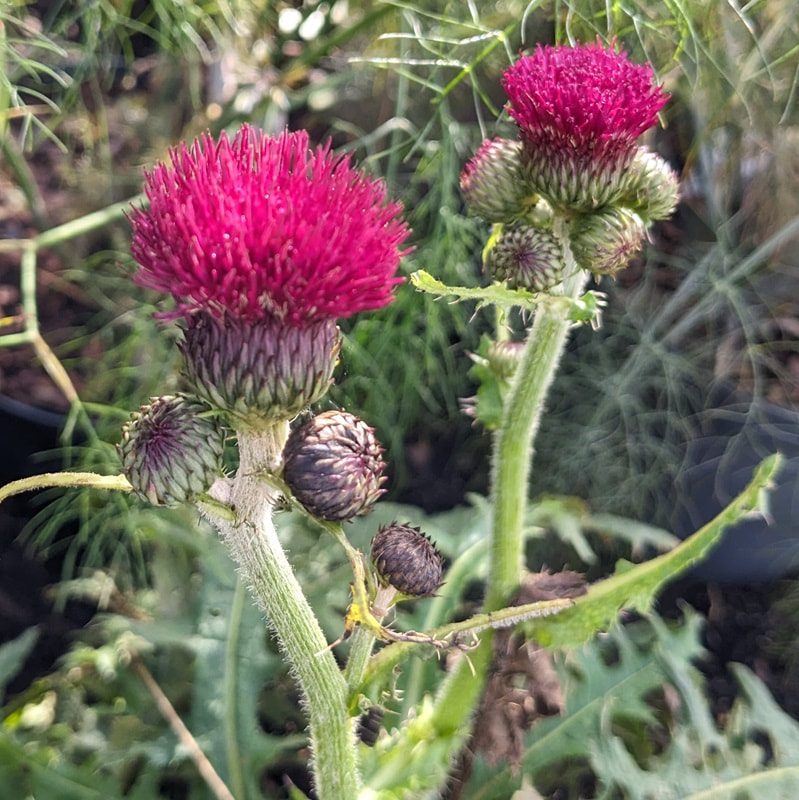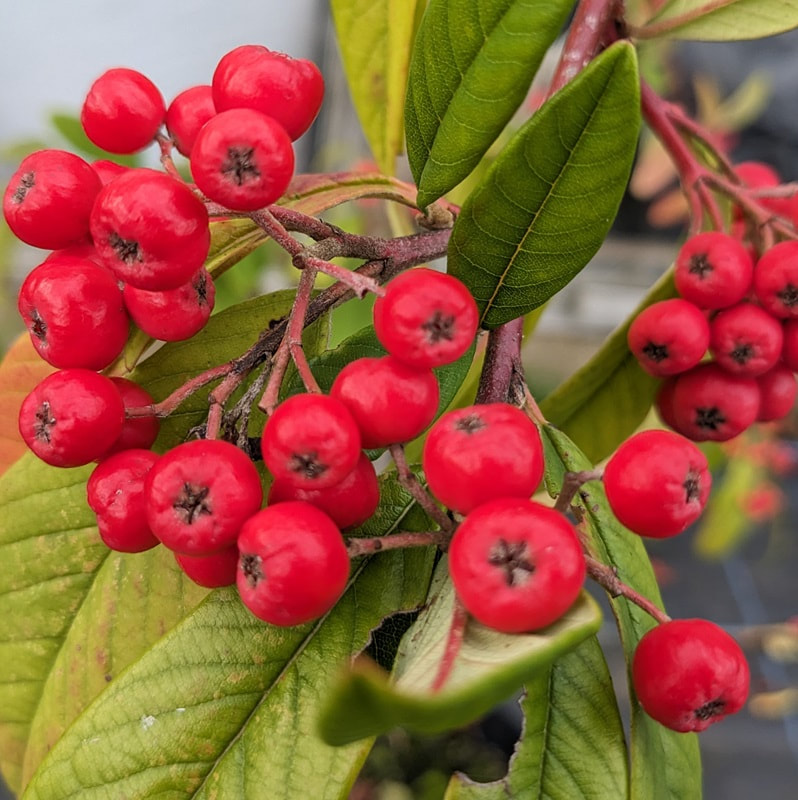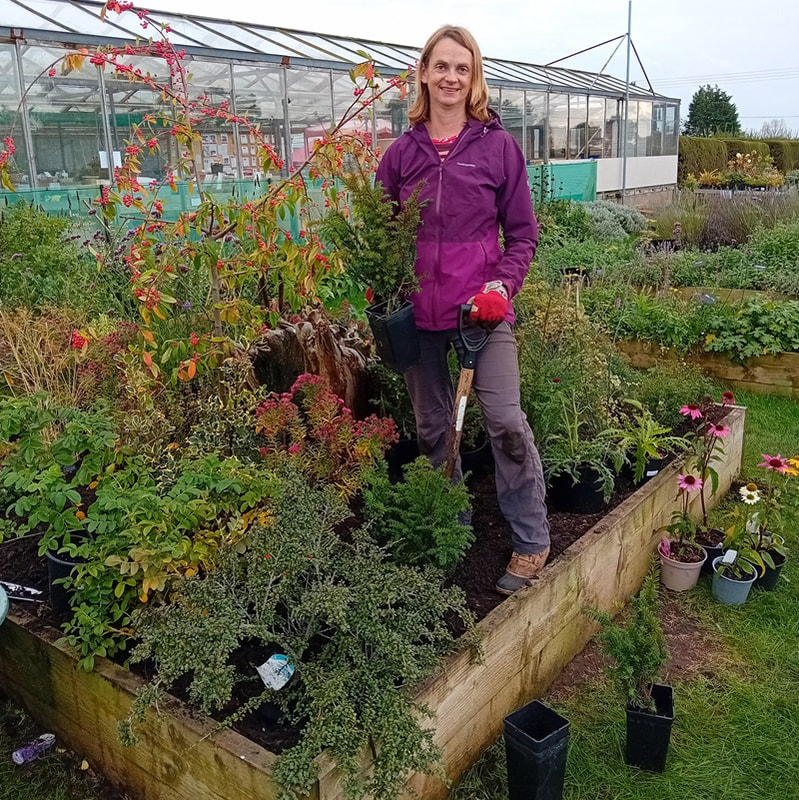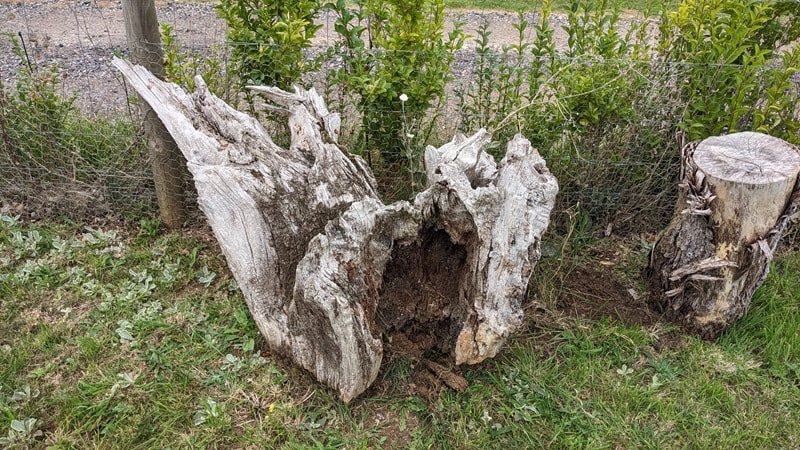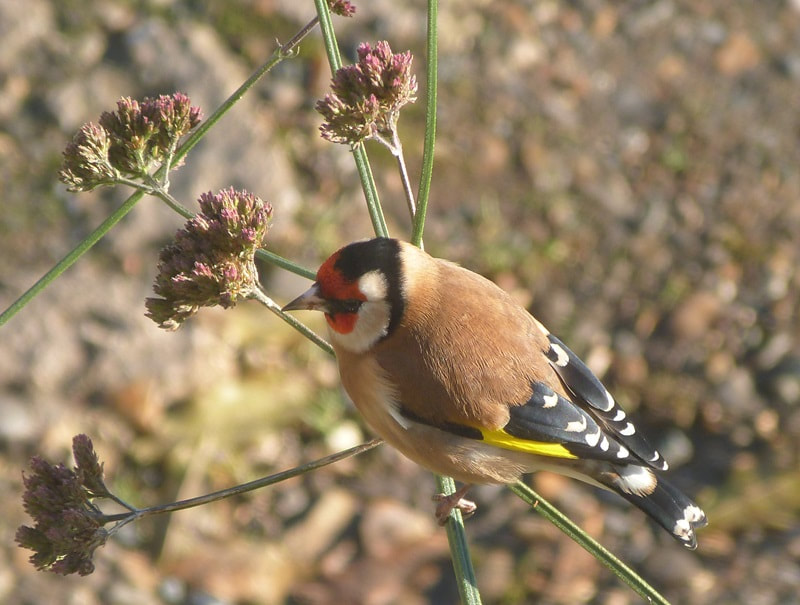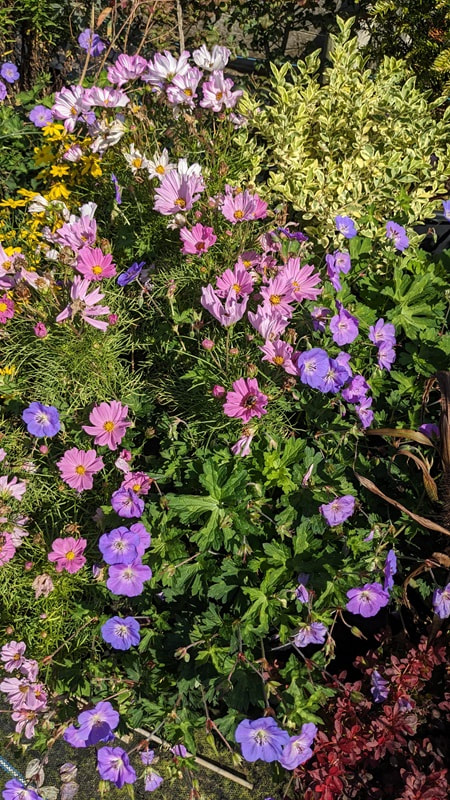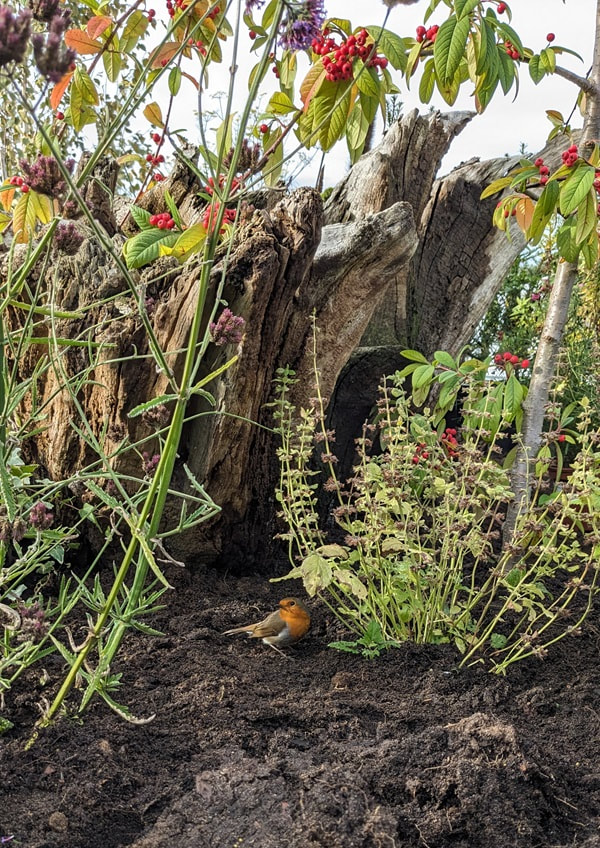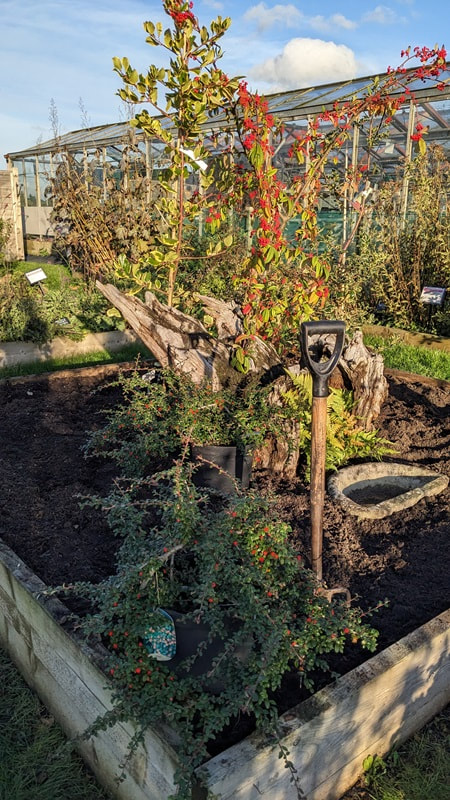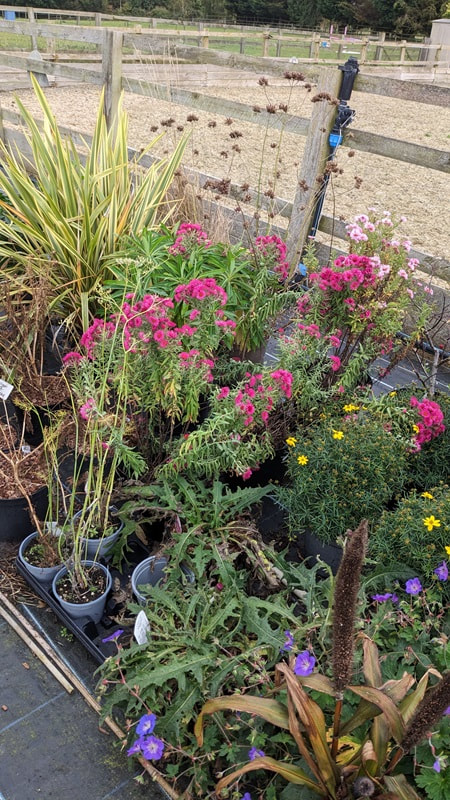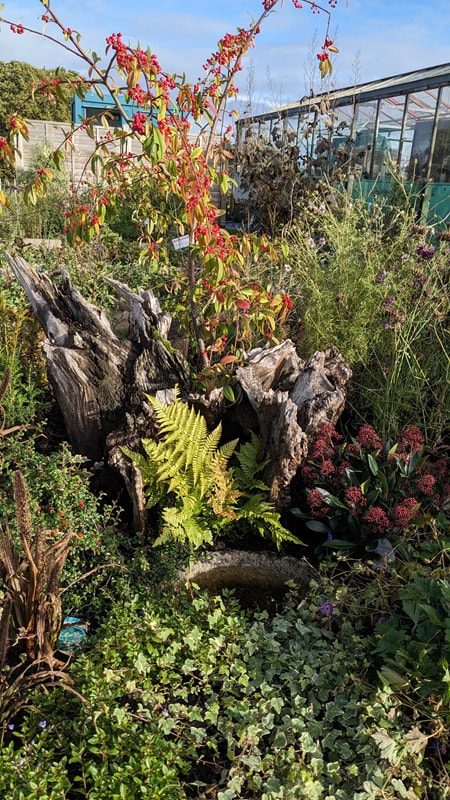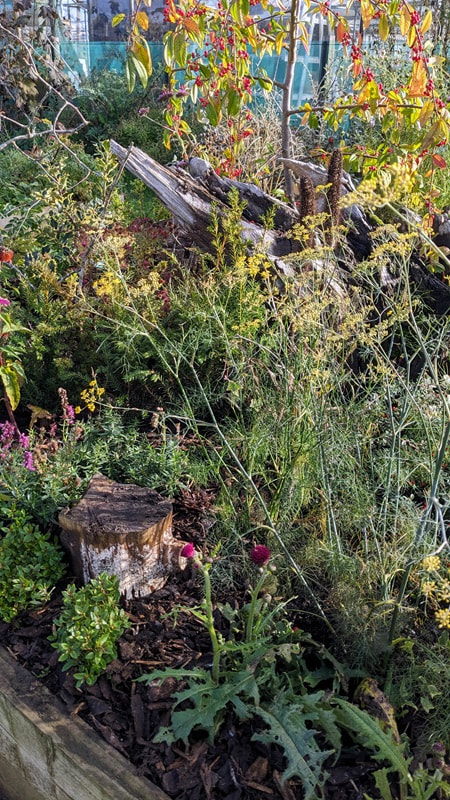'Feed the Birds' is the eighth installation in the Designer Bed, designed by Katie's Garden's Catherine McMillan, author of Gardening for the Uncommitted: What You Really Need To Know When You Don't Really Want To Know.
“A bird-friendly garden is a nature-friendly garden. |
|
Installed in October 2023, the garden has a natural feel without looking too wild or neglected.
It has been primarily planted up for autumn and winter interest, with Cotoneasters the keynote plant providing an array of berries for the birds and also a variety of shapes and textures for the gardener to enjoy. However, seed-bearing plants do of course have to flower first, so plenty of summer colour would have come from the likes of Cosmos, Coreopsis, ornamental thistles and Verbenas. Many summer-flowering Roses are followed by attractive rosehips, a useful food source for larger songbirds in particular. In this garden we have gone with 'rugosa', which has the added benefit of being very good for the bees, and is also suitable for wild hedging. Ornamental grasses are an excellent source of seeds and often look beautiful in the winter frosts so it is well worth waiting till spring to cut them back. Much maligned, English ivy is in fact superb for wildlife, giving year-round shelter, nectar-rich flowers and edible berries. In this garden we have used it as both ground cover and as a climber, using a wigwam of old birch branches to keep it in place. A number of other climbers can also be used for both food and shelter. Ground cover and low-growing plants can provide a hunting ground for finding creepy-crawlies. Among those we have included are Geraniums, lemon balms, evergreen Parahebes, ferns, ivy and Cotoneaster. Old stumps will also draw in bugs, as well as being a spot for standing and surveying the surrounding area. Snail-smashing song thrushes appreciate a hard surface. Trees and hedges are absolute must-haves for helping the wildlife as well as helping the environment. Space constraints mean we have just the one tree - an evergreen Cotoneaster cornurbia - and just a small yew hedge, with privet and box leaved holly included as free-standing shrubs. The one non-natural addition is a stone bird bath. Regardless of how much it rains, natural pools are never going to form in the sandy soils of Newbourne! |
Click on thumbnails to open gallery
Click to download the on-site handout featuring planting list
| designer_bed_feed_the_birds_handout.pdf | |
| File Size: | 621 kb |
| File Type: | |
HoursEvery day: 10am - 4pm
|
Telephone |
|
Newsletters |
Rewards club |

